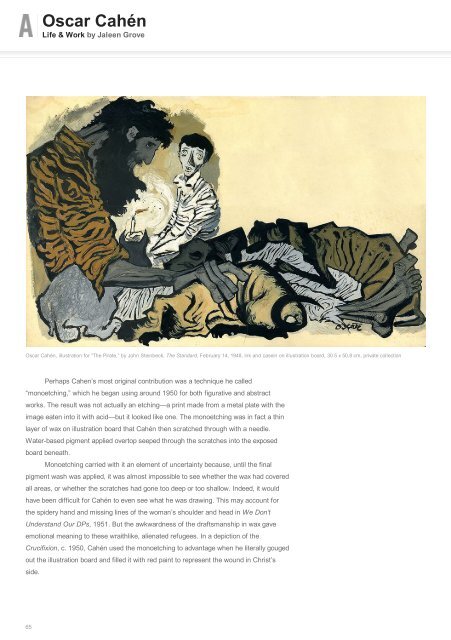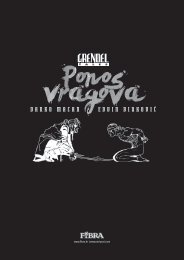Oscar Cahén
Art-Canada-Institute_Oscar-Cah%C3%A9n
Art-Canada-Institute_Oscar-Cah%C3%A9n
You also want an ePaper? Increase the reach of your titles
YUMPU automatically turns print PDFs into web optimized ePapers that Google loves.
<strong>Oscar</strong> <strong>Cahén</strong><br />
Life & Work by Jaleen Grove<br />
<strong>Oscar</strong> <strong>Cahén</strong>, illustration for “The Pirate,” by John Steinbeck, The Standard, February 14, 1948, ink and casein on illustration board, 30.5 x 50.8 cm, private collection<br />
Perhaps Cahen’s most original contribution was a technique he called<br />
“monoetching,” which he began using around 1950 for both figurative and abstract<br />
works. The result was not actually an etching—a print made from a metal plate with the<br />
image eaten into it with acid—but it looked like one. The monoetching was in fact a thin<br />
layer of wax on illustration board that <strong>Cahén</strong> then scratched through with a needle.<br />
Water-based pigment applied overtop seeped through the scratches into the exposed<br />
board beneath.<br />
Monoetching carried with it an element of uncertainty because, until the final<br />
pigment wash was applied, it was almost impossible to see whether the wax had covered<br />
all areas, or whether the scratches had gone too deep or too shallow. Indeed, it would<br />
have been difficult for <strong>Cahén</strong> to even see what he was drawing. This may account for<br />
the spidery hand and missing lines of the woman’s shoulder and head in We Don’t<br />
Understand Our DPs, 1951. But the awkwardness of the draftsmanship in wax gave<br />
emotional meaning to these wraithlike, alienated refugees. In a depiction of the<br />
Crucifixion, c. 1950, <strong>Cahén</strong> used the monoetching to advantage when he literally gouged<br />
out the illustration board and filled it with red paint to represent the wound in Christ’s<br />
side.<br />
65



